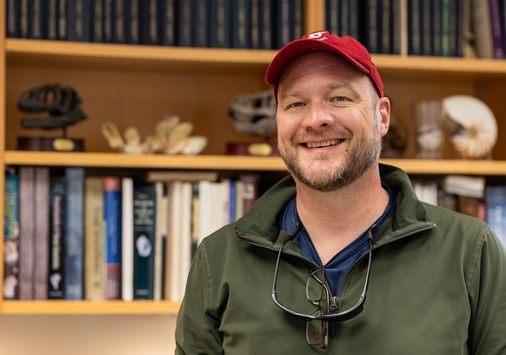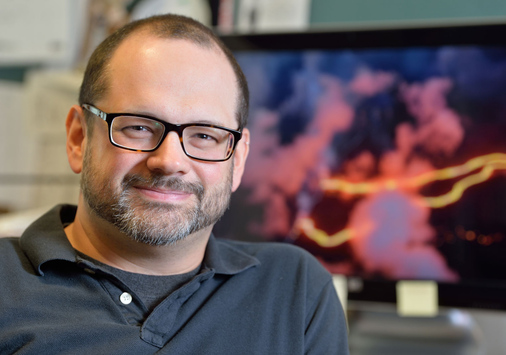Scanning Electron Microscope
Denison University’s Natural Science division is home to an array of extremely sophisticated scientific instruments, including a JEOL scanning electron microscope (SEM). Very few undergraduates, whether in large research universities or private liberal arts colleges, can learn from and operate a SEM of this quality.
The SEM allows student and faculty researchers to conduct microanalysis on a wide variety of materials. The addition of an Energy Dispersive X-Ray Spectrometer (EDS) gives them the resources they need to perform compositional analyses as well.
The SEM lab gives students better analysis and imaging capabilities to examine a wide variety of Earth & Environmental Science (EESC) materials such as volcanic ash, mollusk shells, sediment grains, mineral crystals, and much more.
Students use the SEM in both classes and research. Research-driven projects in classes like Petrology & Volcanology allow students to gain first-hand experience using state-of-the-art instruments in the field. Summer research projects examine items from a few thousand to billions of years old, such as micrometeorites collected from the Granville area and the composition of archeological artifacts from the pre-history of Ohio.
The state-of-the-art micro-analytical instrument is especially important for students who go to graduate school or enter the STEM workforce after their college careers. Adding analytical methods to a variety of courses in the Denison science curriculum deepens the educational experience for science and nonscience majors alike.
The SEM was acquired through a $400 thousand National Science Foundation grant awarded to Associate Professor Erik Klemetti and Denison science faculty colleagues. It was installed in February 2020 and is shared between EESC, chemistry and biochemistry, as well as biology departments.
More about the Scanning Electron Microscope:
The JEOL JSM-IT500HRLV scanning electron microscope (SEM) includes integrated Oxford Instruments AZtec TruMap Energy Dispersive X-Ray Spectrometer EDS and CL (cathodoluminescence) for elemental analyses and characterization along with a sputter coater and critical point dryer. This instrument enhances and creates analytical capabilities for faculty and student research and teaching.












